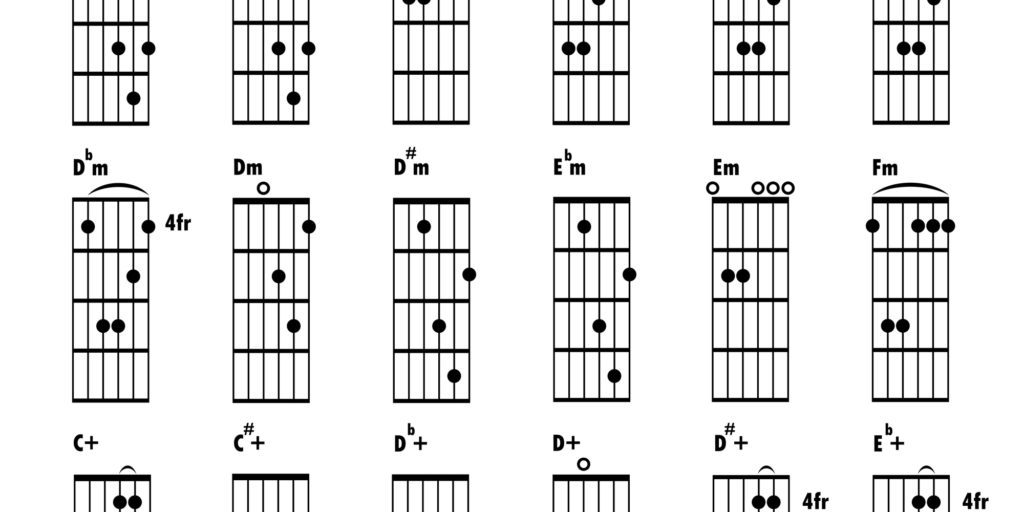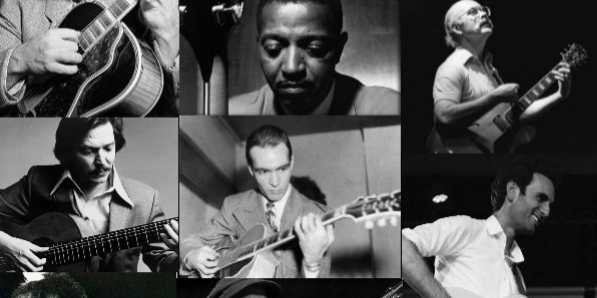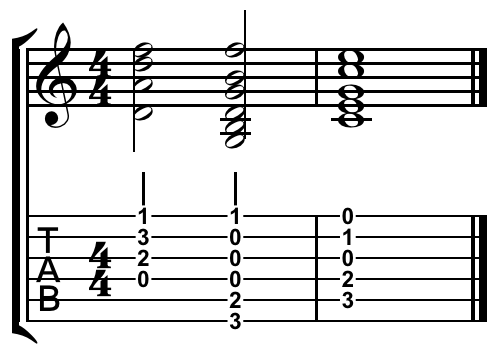
The previous article discussed jazz improvisation, and now the next most important aspect of music to discuss is the harmony.
In jazz music, the harmony is often quite complex, and there are some classic chord progressions that make up a huge amount of the harmony of the jazz standard repertoire we know of today.
Learning these progressions will help all aspects of your musical playing, from pop, rock, or even classical music, as it opens up your ear to new sounds and studying jazz is a great way of learning how harmony works.
The Numerical System
Jazz music, particularly that of the earlier 20th century classic standards, is often made up of common chord progressions.
What are chord progressions? Chord progressions are a series of chords often lasting an even number of 2 or 4 bars that are used widely over many songs.
Now seeing as all songs are written in different keys and often the same song is transposed by different musicians, it makes it hard to name the progressions using their alphabetical name, as this will change with each key we use--so the numerical system is applied which will always remain the same for every key. It seems like more, unnecessary information is being used, but in fact, using these numbers allow us to explain a chord progression with no specified key.
We start like this: in the major scale there are 7 notes, each note acts as the root note to a chord that fits to that scale, so in C major there would be a C chord, followed by a D chord, then E and so on up the scale until we reach C again.
The chords consist of three notes, the root note (1) the third (3) and the fifth (5) so we end up with 1, 3 and 5.
The quality of the chord (major or minor) is determined by the third (3), if it is three semitones above the root note it is a minor third and if it is four notes above it is a major third, you can see how this works by visualising it on one string, start on on the E string, count up three semitones and you will reach G, count up four and you will reach G#. G is a minor third and G# is the Major third.
Now when we apply this to the C major scale we can find the quality of each chord, for the D chord we start on D and count up to the third (3); D to E to F, so F is the third. As F is only three semitones above D it is a minor third, this makes the D chord a D minor. If we do this to all the chords we get this,

Notice the B is a diminished chord, this is determined by a minor third and a flattened fifth and will be discussed in further lessons.
This is the ‘harmony’ of C major, now if i take away the letters and replace them with numbers I am left with this,

This can now be applied to any chord, for example I can now tell someone to play a “one chord” or “I” in the key of G and that will mean a G major chord, if I ask them to transpose this to the key of D, a “one chord” would become D major, therefore the two chord of D major would be E minor.
A major chord is represented by a capital roman numeral, and a minor by a lowercase as we can see in the above example the I, IV and V are in upper case because they are major chords, and the ii, iii, vi and vii are minor chords so are written in lowercase. This takes some getting used to, but is a very helpful system in jazz as there are many licks and chord progressions that you will find yourself playing in lots of different keys.
For this lesson we are going to look at four barre chords, the major and minor on the E string (shown with arrow), and the major and minor on the A string, these look like this,
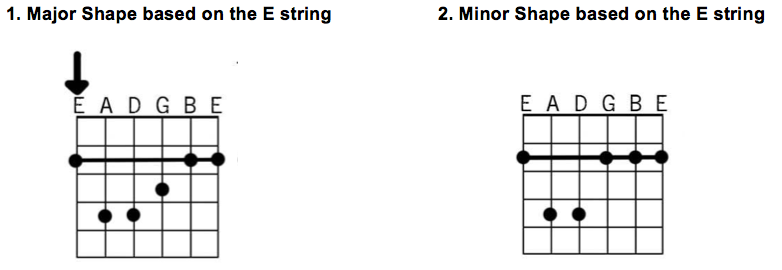
Notice the only difference in the shape is that one note is flattened, this is the third (3) as mentioned earlier.
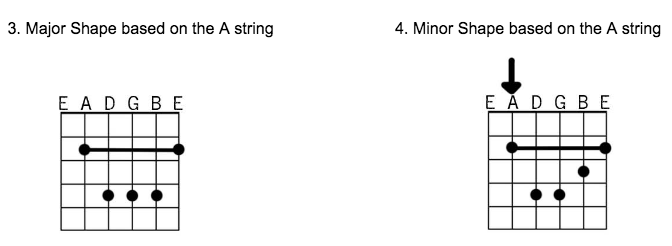
Shape no.1 is based on of the E string, this means that the root of the chord is played on the E (sixth string) and can be moved up and down the fretboard.
An example would be this: the note on the 3rd fret of the E string is a G, so therefore when we play this chord shape on the third fret, we get a G chord, and depending on which shape you use you will get major or minor. The same applies for chords on the A string.
Below is a diagram of all the notes on the E string and A string, using this you should be able to find any chord you need fairly economically by moving the shape up and down the fretboard.
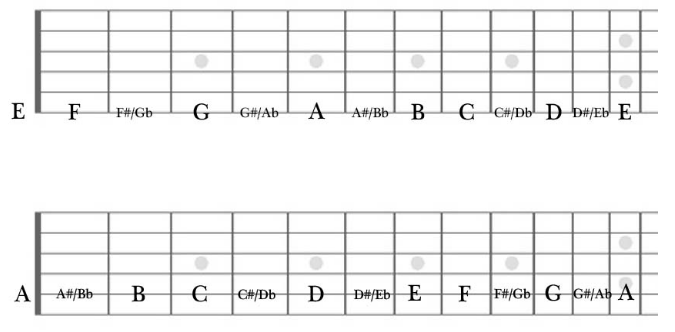
Example: To play a C major chord you would use shape no. 1 on the eighth fret or shape 3 on the third fret.
Common Jazz Chord Progressions
ii - V - I
Some of the most famous jazz standards, such as Fly Me to the Moon, All of Me, and Autumn Leaves are built of the ii-V-I progression. If you have ever looked into jazz guitar before, it is likely you have come across this many times. In C major, the progression would look like this:

D minor is the ii chord and the G major is the V as we can clearly see from the first diagram. Practice strumming four down beats on the Dm (ii chord), four beats on the G (V chord), and eight beats on the C (I chord). This creates a 4 bar progression, the ii-V-I

I - vi - ii - V
This progression is called a turnaround, meaning it starts on the one and ends on a V chord, the V chord always leads back into the tonic (I chord). The I - vi - ii - V progression is incredibly common, particularly in old pop music. The famous tune At Last is based entirely around this progression. In the key of C it will look like this, keeping one bar per chord:

Conclusion
Practice this the same way you practice the ii-V-I, four down beats for each chord. You may have noticed this progression actually contains the ii-V-I, as the V chord leads back into the I chord.
Because these chord progressions are common in traditional jazz music, learning them is useful as it prepares you to play at least half of any traditional jazz songs you want to learn. As you get more accustomed to playing these chord progressions, you will instantaneously know what progression it is when you are listening to a jazz song on the radio.
Practise both of these in the key of C and start to transpose, try playing it in the key of G, and then in the key of D and if this is becoming too easy, by all means, continue to transpose the progressions until you are familiar with them in every key!
You can figure out which chords to use, by applying the numerical system to the chords in that key check out an article about the circle of fifths for an understanding of the different keys and different notes in each key.

